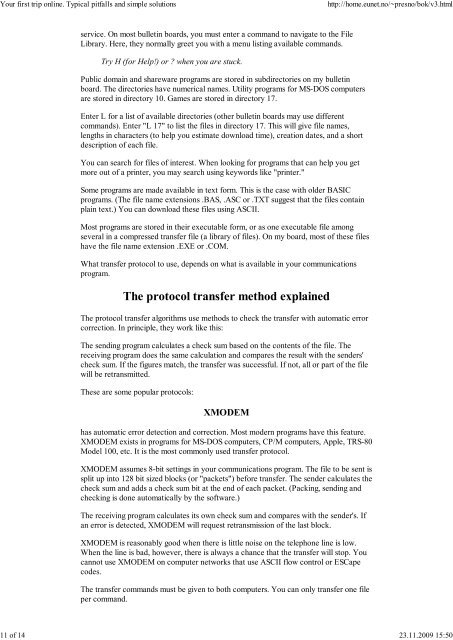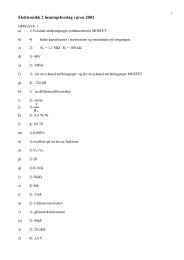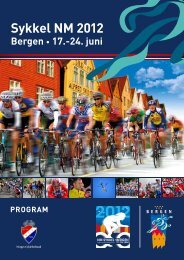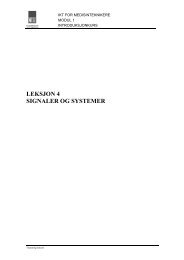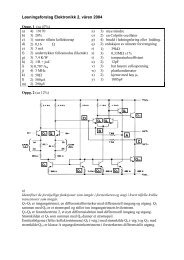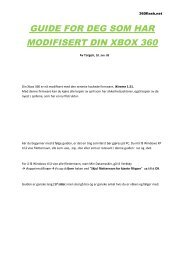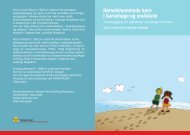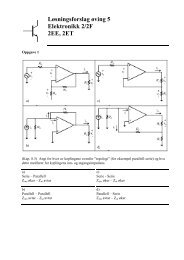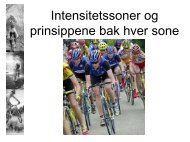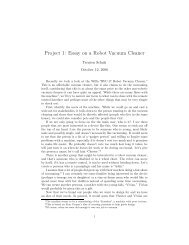The Online World resources handbook
The Online World resources handbook
The Online World resources handbook
Create successful ePaper yourself
Turn your PDF publications into a flip-book with our unique Google optimized e-Paper software.
Your first trip online. Typical pitfalls and simple solutions http://home.eunet.no/~presno/bok/v3.html<br />
service. On most bulletin boards, you must enter a command to navigate to the File<br />
Library. Here, they normally greet you with a menu listing available commands.<br />
Try H (for Help!) or ? when you are stuck.<br />
Public domain and shareware programs are stored in subdirectories on my bulletin<br />
board. <strong>The</strong> directories have numerical names. Utility programs for MS DOS computers<br />
are stored in directory 10. Games are stored in directory 17.<br />
Enter L for a list of available directories (other bulletin boards may use different<br />
commands). Enter "L 17" to list the files in directory 17. This will give file names,<br />
lengths in characters (to help you estimate download time), creation dates, and a short<br />
description of each file.<br />
You can search for files of interest. When looking for programs that can help you get<br />
more out of a printer, you may search using keywords like "printer."<br />
Some programs are made available in text form. This is the case with older BASIC<br />
programs. (<strong>The</strong> file name extensions .BAS, .ASC or .TXT suggest that the files contain<br />
plain text.) You can download these files using ASCII.<br />
Most programs are stored in their executable form, or as one executable file among<br />
several in a compressed transfer file (a library of files). On my board, most of these files<br />
have the file name extension .EXE or .COM.<br />
What transfer protocol to use, depends on what is available in your communications<br />
program.<br />
<strong>The</strong> protocol transfer method explained<br />
<strong>The</strong> protocol transfer algorithms use methods to check the transfer with automatic error<br />
correction. In principle, they work like this:<br />
<strong>The</strong> sending program calculates a check sum based on the contents of the file. <strong>The</strong><br />
receiving program does the same calculation and compares the result with the senders'<br />
check sum. If the figures match, the transfer was successful. If not, all or part of the file<br />
will be retransmitted.<br />
<strong>The</strong>se are some popular protocols:<br />
XMODEM<br />
has automatic error detection and correction. Most modern programs have this feature.<br />
XMODEM exists in programs for MS DOS computers, CP/M computers, Apple, TRS 80<br />
Model 100, etc. It is the most commonly used transfer protocol.<br />
XMODEM assumes 8 bit settings in your communications program. <strong>The</strong> file to be sent is<br />
split up into 128 bit sized blocks (or "packets") before transfer. <strong>The</strong> sender calculates the<br />
check sum and adds a check sum bit at the end of each packet. (Packing, sending and<br />
checking is done automatically by the software.)<br />
<strong>The</strong> receiving program calculates its own check sum and compares with the sender's. If<br />
an error is detected, XMODEM will request retransmission of the last block.<br />
XMODEM is reasonably good when there is little noise on the telephone line is low.<br />
When the line is bad, however, there is always a chance that the transfer will stop. You<br />
cannot use XMODEM on computer networks that use ASCII flow control or ESCape<br />
codes.<br />
<strong>The</strong> transfer commands must be given to both computers. You can only transfer one file<br />
per command.<br />
11 of 14 23.11.2009 15:50


